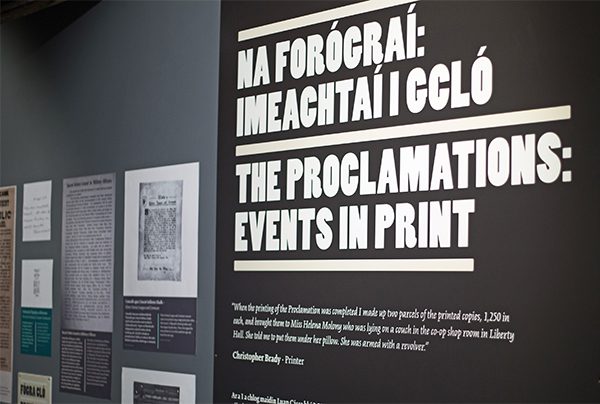
A new exhibition recently opened in the National Print Museum on May 7th, which will run on until September.
‘Seditious Types, Legacy of the Printers of 1916’ opened earlier this month seeking to engage the public in a fresh understanding of the 1916 Rising in a whole new historical context. The exhibition explores the crucial role played by printers and the print media at large in shaping the meaning and public image of the Rising.
Admission to the exhibition is free of charge and opening hours are 9 to 5 from Monday to Friday and 2 to 5 on weekends, and under the wardship of Carla Marrinan.
Sponsorship for the exhibition comes in the form of financial support from the Irish design and print industry.
The print industry in Ireland grew exponentially from the 17th century onwards and tended to be intrinsically linked to political and administrative changes within the country. Print forms permeated all strands of society and included such categories as academic works, luxury accessories and administrative stationary.
In 1916 the printed word was the primary medium of communication, exemplified by the mass presence of newspapers, fliers, posters and other sorts of publications. At the time in question, the print industry in Dublin was flourishing, a necessity given the expansion of the middle and upper classes.
The printed content of the time related mainly to cases of political and social upheaval, and the crucial issues of the day: these issues included Home Rule, the enlistment of men for World War I, the Lockout and the nascent Suffragette movement.
The print press at the time was also heavily involved in the mass production of material for nationalist and unionist organisations. The aggressive tones of these texts are evident, some of which can be found in the ‘Seditious Types’ exhibition.
From the outbreak of the First World War, the Dublin Castle administration scrutinised all printed works in the capital, even going so far as to deploy the Defence of the Realm Act to suppress those considered to be spreading seditious ideas throughout the body politic.
Politics and the print industry had a somewhat fraught relationship around this time period. The print industry as a commercial sphere often had a conflict of interests since they produced massive amounts of material for the primary political outfits and also for the British administration, often resulting in publications printing the disparate viewpoints of groups on opposite sides of the spectrum.
Many print shops were associated with the Gaelic League and the Irish literary movement, with works by great names such as W.B Yeats and Sean O’Casey put into distribution. A movement known as the ‘mosquito press’ then evolved out of this timeframe from radical political activists in Dublin, due to the coercive power of print media to impact public opinion. In the case of some of the more seditious types, many printing presses had to be set up in clandestine locations.
NewsFour readers have until September to check out this fascinating insight into some of the more hidden histories of the events of 1916.
By Craig Kinsella



